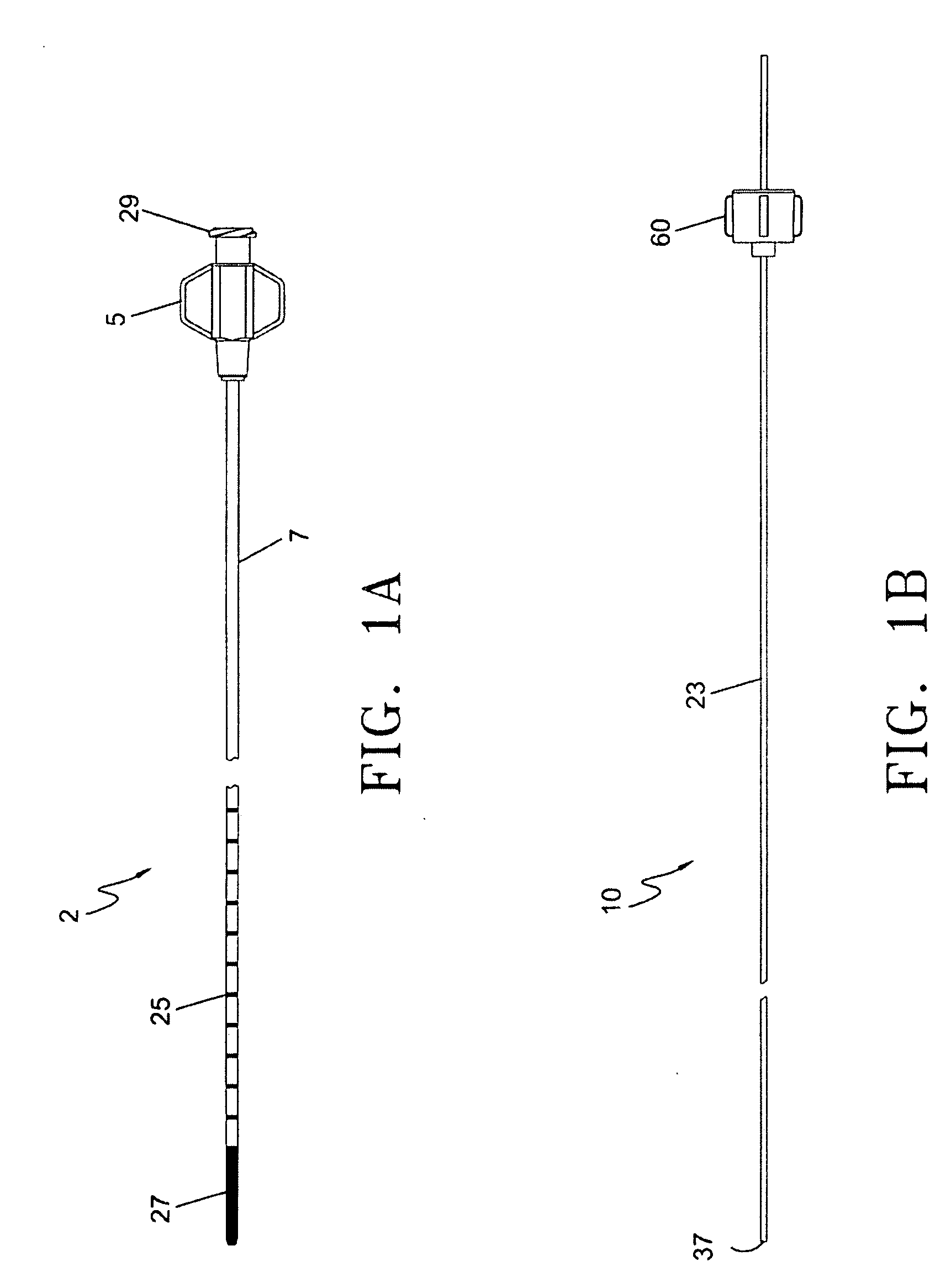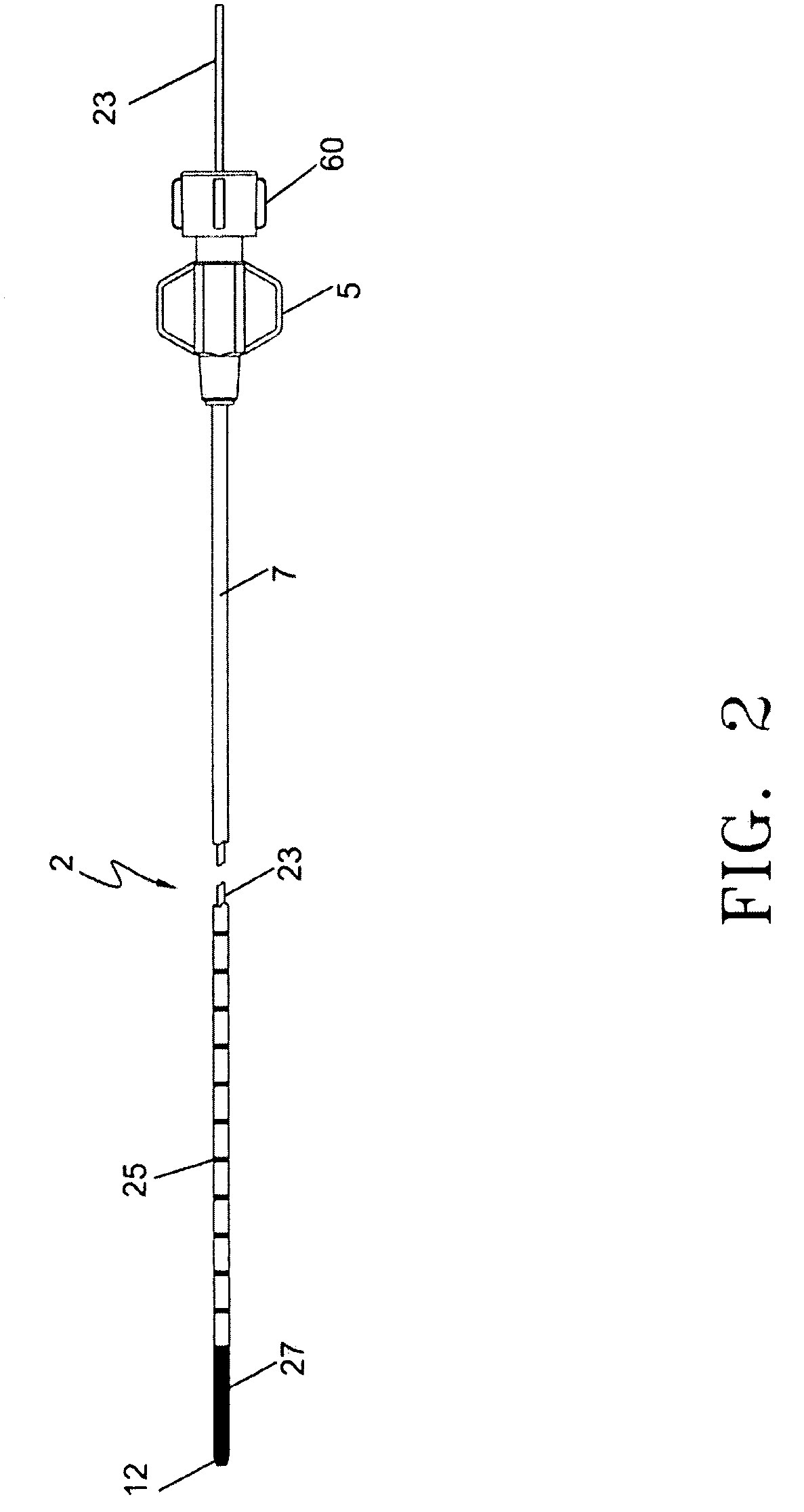Endovascular treatment sheath having a heat insulative tip and method for using the same
a technology of endovascular treatment and heat insulation, which is applied in the field of medical devices and methods for treating blood vessels, can solve the problems of venous reflux, varicose veins are often painful, and no longer prevent the backflow of blood into superficial veins, so as to prevent the perforation and extravasation of blood vessels
- Summary
- Abstract
- Description
- Claims
- Application Information
AI Technical Summary
Benefits of technology
Problems solved by technology
Method used
Image
Examples
Embodiment Construction
[0032]The present invention is illustrated in FIGS. 1 through 8. A treatment sheath 2 is illustrated in FIG. 1A. The treatment sheath 2 includes a proximal sheath hub 5, a sheath shaft 7 and an insulating tip 27 at the distal end. Extending from the hub 5 to the insulating tip 27 is a through lumen 9 (see FIG. 3). The sheath shaft may optionally include depth / distance markers 25. The sheath shaft 7 may also optionally include a reinforcement metallic element embedded within the polymer shaft 7 such as that disclosed in U.S. patent application Ser. No. 10 / 836,084, which is incorporated herein by reference. The hub 5 includes a standard luer threaded proximal end (treatment sheath connector) 29 for connection to an optical fiber connector 60 (FIG. 1B) or other interventional devices. Hub fittings other than those specifically described herein are within the scope of this invention.
[0033]FIG. 1B illustrates the energy delivery device of the current invention. In particular, the energy ...
PUM
 Login to View More
Login to View More Abstract
Description
Claims
Application Information
 Login to View More
Login to View More - R&D
- Intellectual Property
- Life Sciences
- Materials
- Tech Scout
- Unparalleled Data Quality
- Higher Quality Content
- 60% Fewer Hallucinations
Browse by: Latest US Patents, China's latest patents, Technical Efficacy Thesaurus, Application Domain, Technology Topic, Popular Technical Reports.
© 2025 PatSnap. All rights reserved.Legal|Privacy policy|Modern Slavery Act Transparency Statement|Sitemap|About US| Contact US: help@patsnap.com



